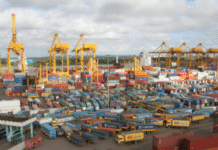Where has all the money gone from the banks?
A huge budget looms large in front of the nation, while the bank vaults appear empty. With massive expenditure in the offing, funds seem to have run dry. It is under such circumstances that finance minister AHM Mustafa Kamal is all set to present the TY2019-20 national budget.
The banking sector is in shambles. Though the GDP is posed to exceed 8 per cent, the banks are lacking in vitality. The industrial sector investment is entirely dependent on bank loans, yet a fund crisis prevails. So where has all the money gone?
Experts contend that bank loans are not being repaid, default loans are simply on the rise. Capital flight continues in full swing. The public lack confidence in the banking system and deposits dwindle.
Speaking to Prothom Alo, chairman of Bangladesh Auto Rerolling and Steel Mills Association, Monowar Hossain, said, “I am bewildered about where all the money is going. The government must look into whether back money is being siphoned off from the banking system.”
The country’s economy is now dependent on the private sector. The private sector is also the main source of job creation. Yet entrepreneurs are at a loss, faced with the liquidity crisis of the banks. It is difficult to avail new loans and, at the same time, interest rates surpass 15 per cent. Even the older businesses are struggling to run due to this fund crisis.
Monowar Hossain said, “No one is getting money from the banks, neither the big businesses nor the medium ones. We are not even getting running capital. This is a serious situation.”
Revenue sector income will only increase if the economy is vibrant, if investment in the production sector increases and if businesses expand. But the banking sector crisis will impact the entire economy. The new finance minister now faces the challenge of revitalising the banking sector.
Former president of Dhaka Chamber of Commerce and Industry (DCCI) Abul Kashem Khan says that when banks have inadequate funds to provide loans, this affects the overall economy. The loan flow to the private sector began decreasing from December. Interest rates are going up. All this has made things difficult for the economy. He feels that alternative measures should be taken in the forthcoming budget in order to reduce dependence on bank loans.
Interest rates in a mess
Faced with the liquidity crisis, private sector bankers from top to the bottom, are desperately seeking depositors. The private banks are now running on loans from the central bank and state-owned banks.
Other than the state-owned banks, very few have adequate funds for investment. Many of these banks are now aggressively pursuing depositors. Padma Bank (formerly Farmers’ Bank) is promising depositors to double their deposits within 5 years, meaning an over 14 per cent interest rate. Yet City Bank, another private bank, will double deposits in 9 years, with a 7.75 per cent interest rate. In this chaotic state, interest rates are on a rise and may even hit 16 to 17 per cent.
Commenting about the overall condition of the banking sector, BRAC Bank managing director Selim RF Hossain told Prothom Alo, 26 to 27 per cent of the liquidity had gone into saving certificates. Everyone is opting for saving certificates due to high interest rates and tax exemption. Then again, exports have increased in proportion to imports. This is putting pressure on exchange rates. Default loan have also held up funds. Default loans must be repaid in order to resolve the prevailing liquidity crisis. Laundered money must be brought back and invested.
Incidentally, the US-based research institute, Global Financial Integrity, said that over the past one decade, about Tk 70 billion has been smuggled out of Bangladesh.
Who are getting the loans?
An analysis of the sector-wise bank loans reveals that over the past three years, the most loans are being provided to the construction industry and contractors. The contractors are basically those who have availed contracts with the government mega projects. The banks are eager to provide such loans as repayment comes easily from government bills.
According to central bank records, loans to the construction sector and contractors in 2016 amounted to Tk 482.80 billion. In 2017 this increased to Tk 582.20 billion. In 2018 this went up to Tk 614.30 billion.
The bank officials say that the major projects underway are the Padma Bridge, Metro Rail, Rooppur nuclear power plant, the four-lane highway and such. There are several district level projects ongoing too. The banks are providing loans to the local contractors for these projects.
Chairman of the Association of Bankers Bangladesh, Syed Mahbubur Rahman, told Prothom Alo that all banks are eager to provide loans to the contractors as the is a huge amount of government work going on. The loans are repaid as soon as the government bills come through.
Central bank, a silent onlooker
The central bank remains a silent onlooker, taking no initiative so far to address the crisis in the banking sector. On the contrary, it is coming up with polices to facilitate the loan defaulters time and again. Its monitoring system is weak and so irregularities slip though the loopholes, unobserved and unpunished.
Former governor of Bangladesh Bank Salahuddin Ahmed told Prothom Alo that a bank commission is needed, even if on a temporary basis, to tackle the problems in the banking sector.
* This piece appeared in the print edition of Prothom Alo and has been rewritten in English by Ayesha Kabir









